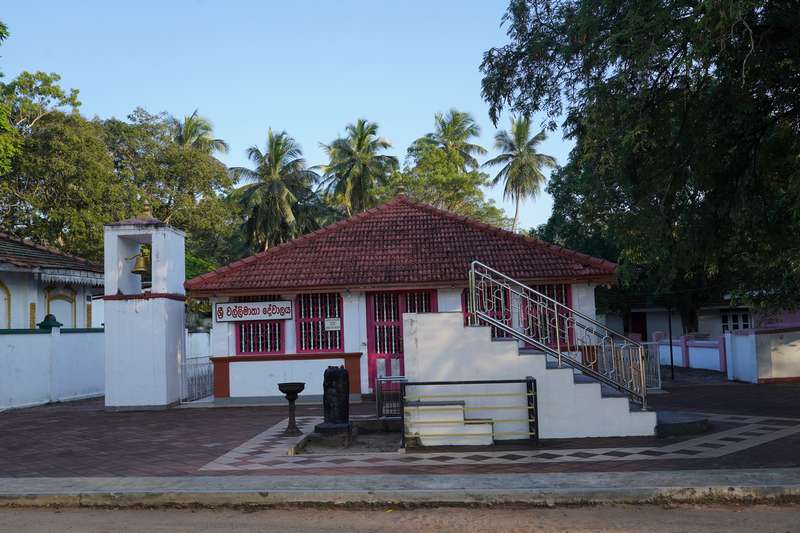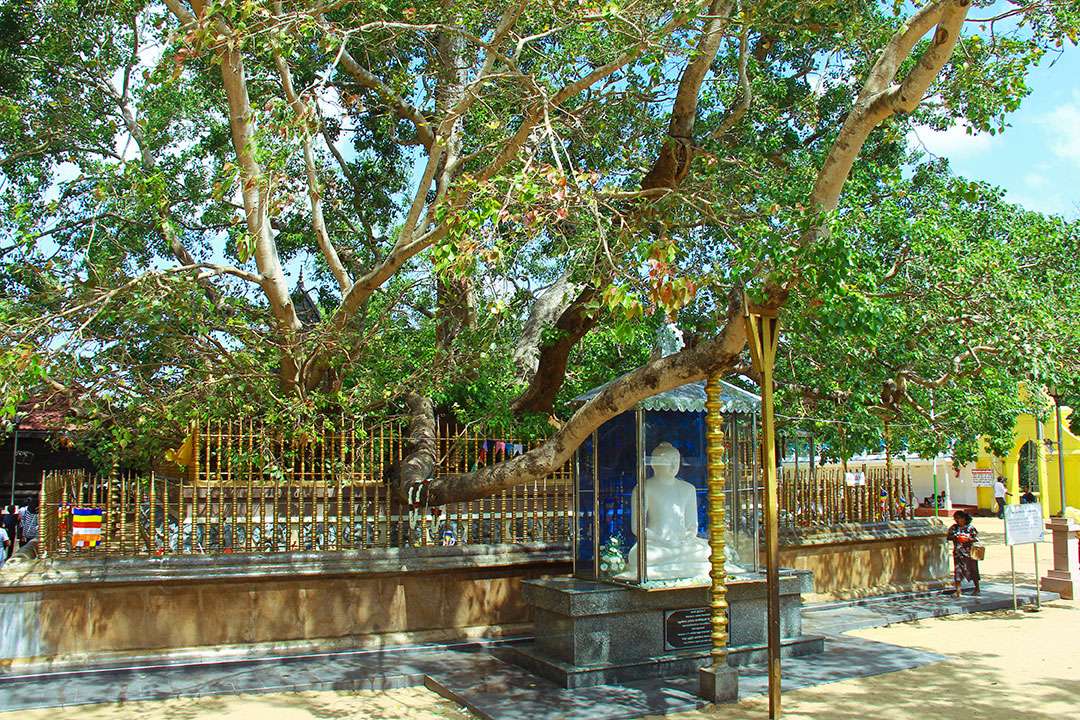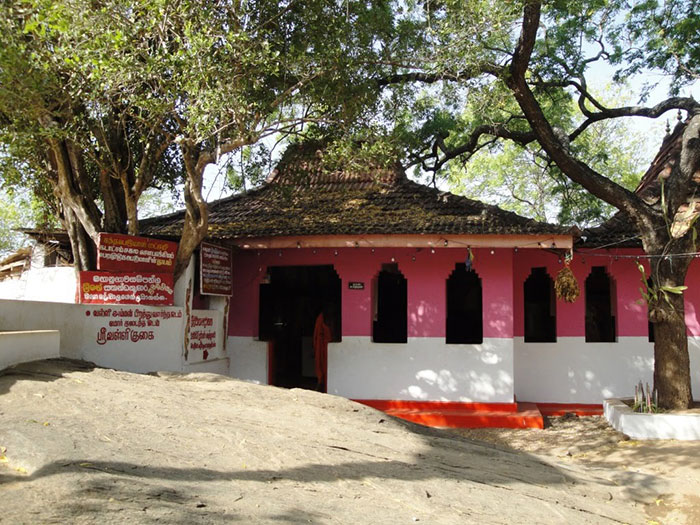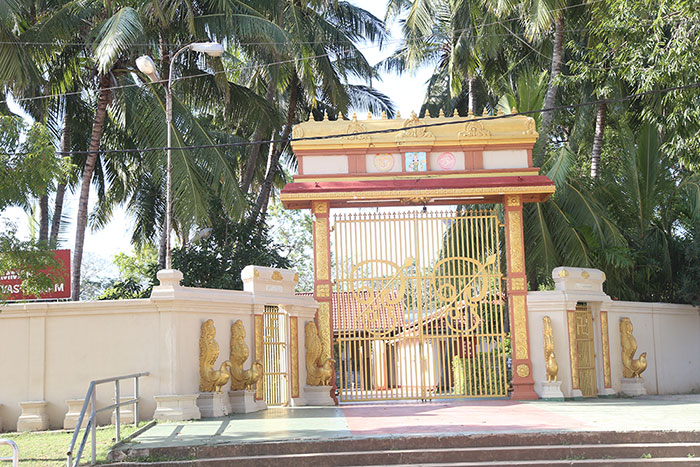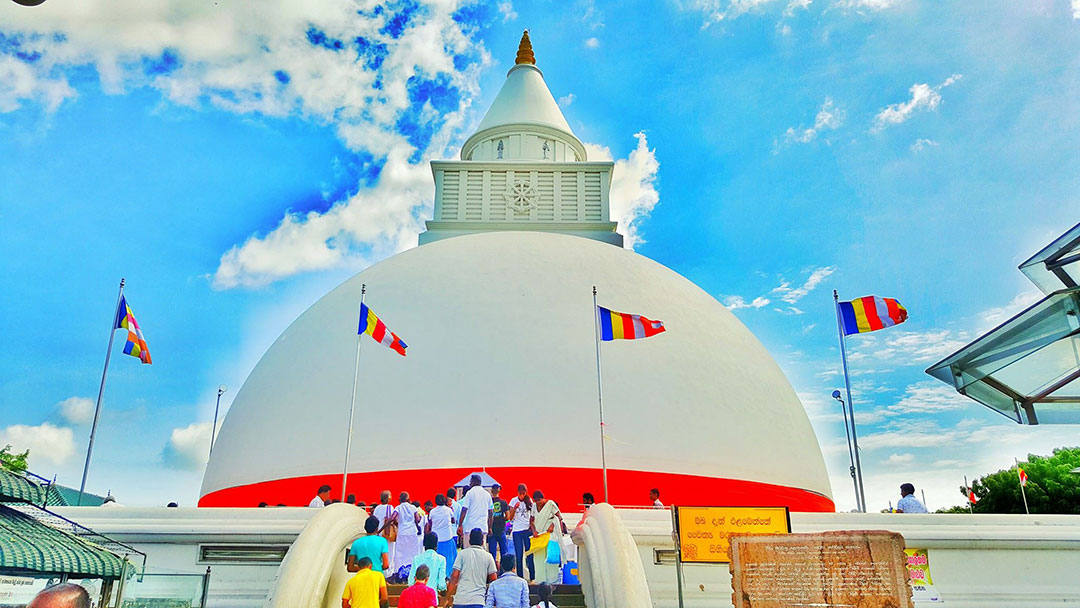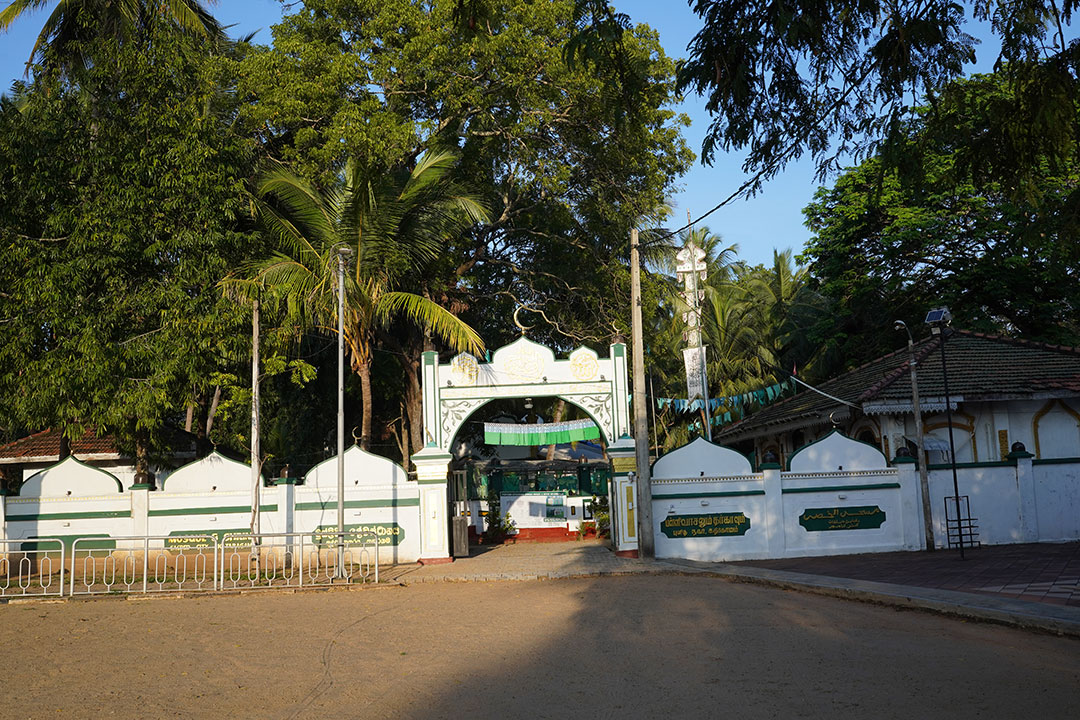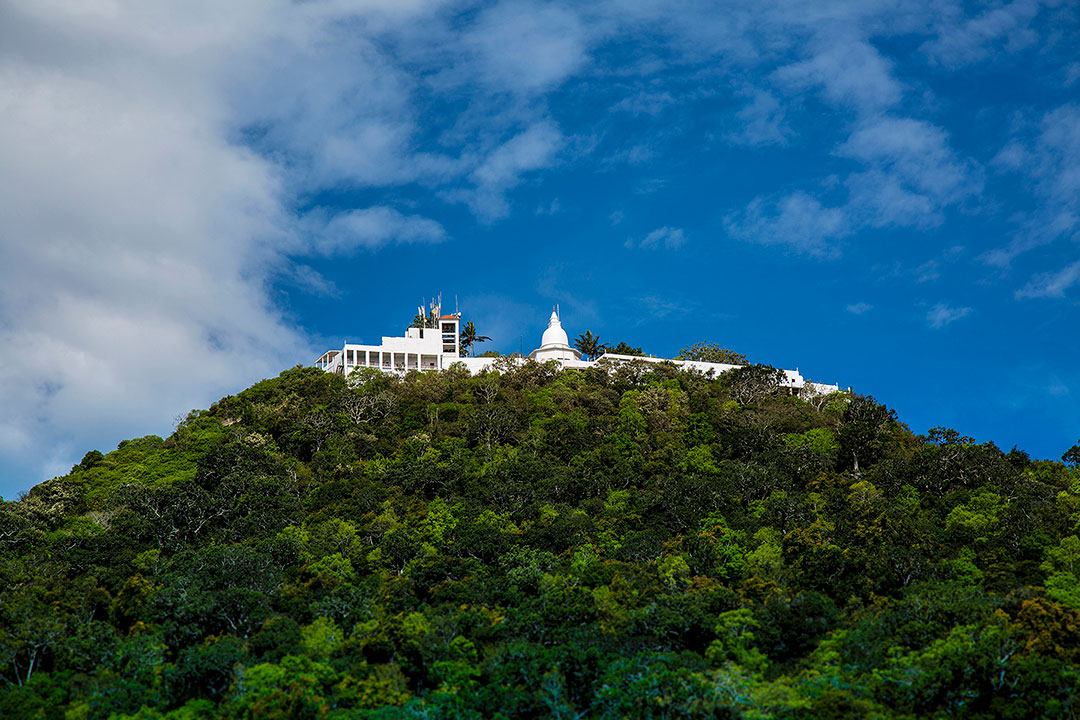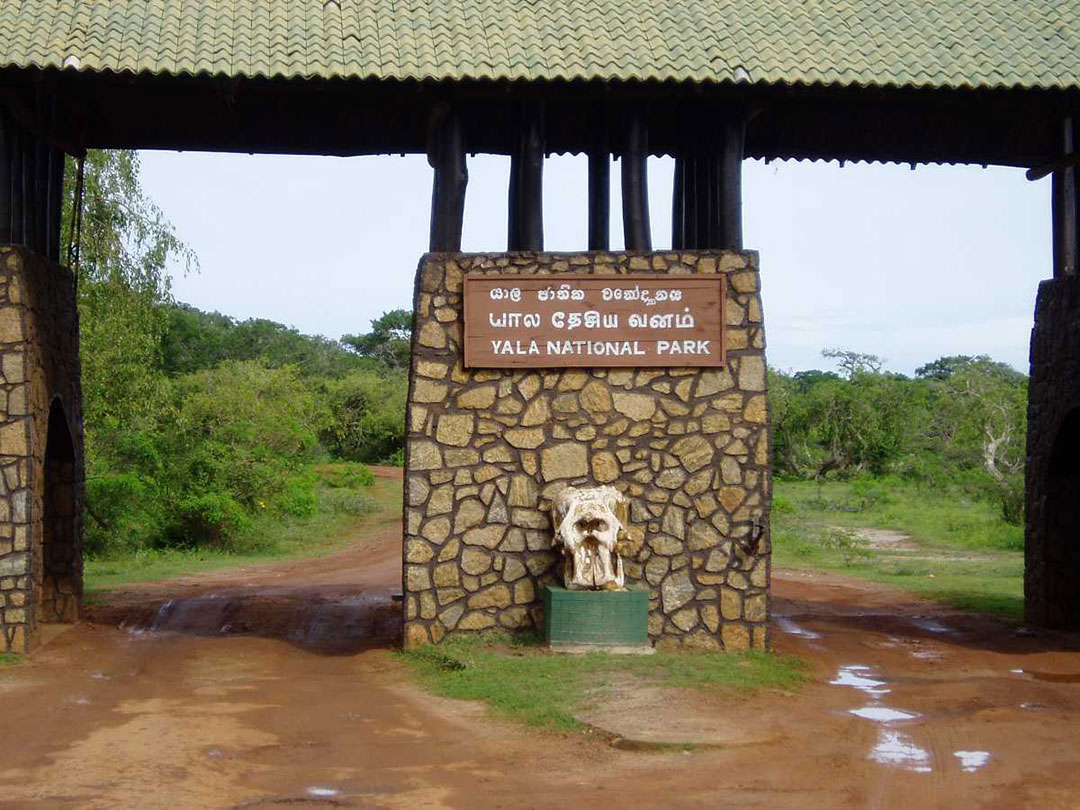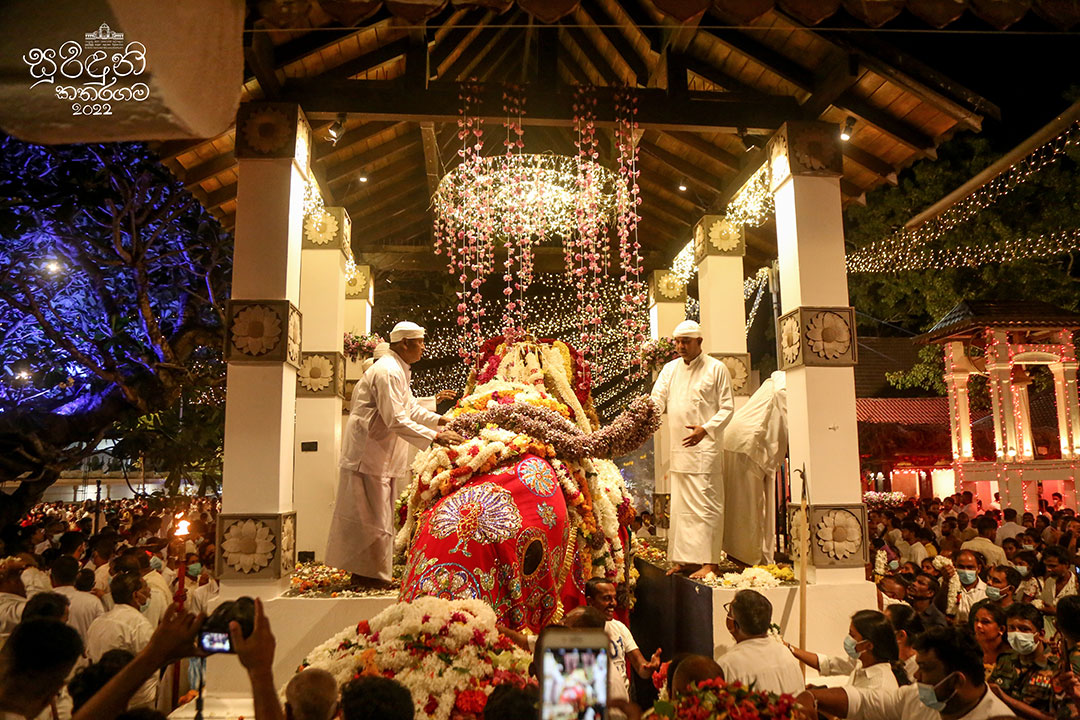-
-
-
Ruhunu Maha Kataragama Dewalaya, Kataragama, Sri Lanka
About
- Home
- About
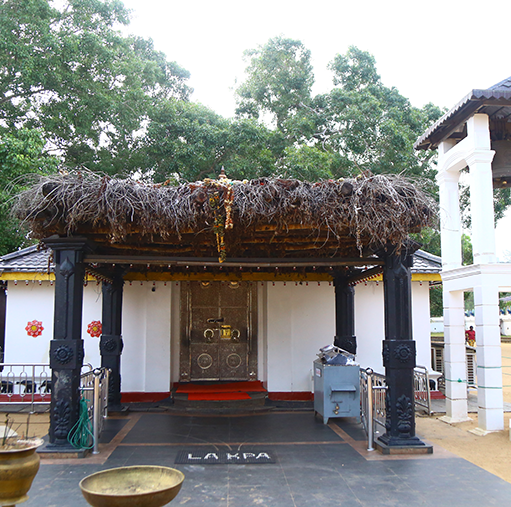
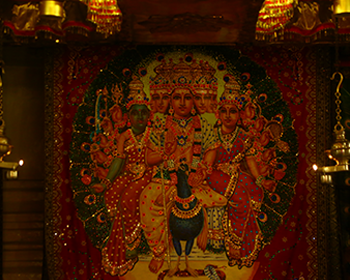
Kataragama Devalaya
A temple for all faiths
The holy site of Kataragama, nestled on the banks of the Menik Ganga, close to the Yala Wildlife Reserve, and in the deep southeast of Sri Lanka, is a site of frequent and popular pilgrimage by Buddhists, Hindus, Muslims, and even Christians. Rich in historical associations and legends, Katargama is tightly woven with its deity – Skandha, the God of War. The worship of God Skandha takes many forms, the culmination of which manifests in the annual Esala Festival and Perahera, itself a spectacle with many rituals. A land where all religions of the country meet, Kataragama contains multiple sites of note, including spiritual sites such as the Kiri Vehera and various temples and kovils dedicated to various deities, as well as natural attractions such as the nearby Yala National Park and Menik Ganga.
Myths and origins
Kataragama is one of the few places in modern Sri Lanka worshipped irrespective of nationality, caste, religion, and politics. An ancient shrine situated in the extreme southeast corner of Sri Lanka, the temple complex is dedicated to Buddhist guardian deity Kataragama and Hindu War God Murugan.
A unique meeting place of two connected yet divergent religious traditions on the island – Buddhism and Hinduism – Kataragama is held in deep veneration as a centre of culture and pilgrimage by both Buddhists and Hindus, as well as Muslims.
Hindu tradition
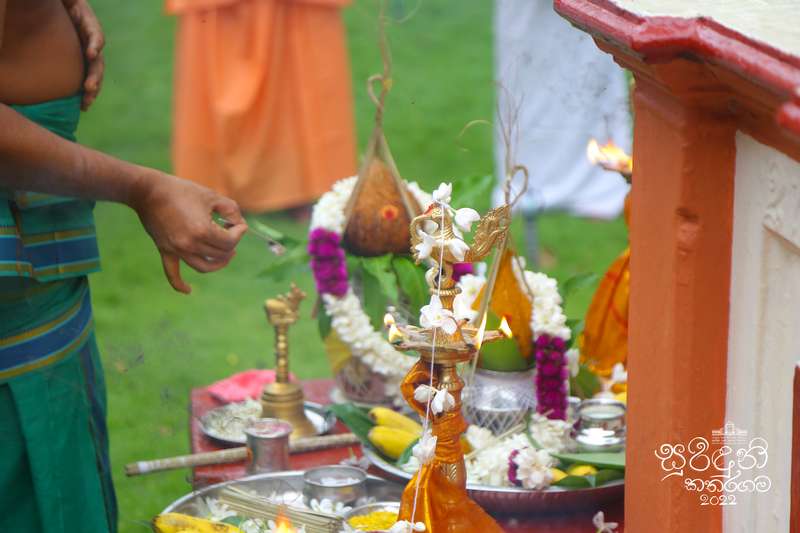
In the Hindu tradition, Kataragama is the oldest and most sacred centre of the cult of Skanda/Murugan in the island. Valli, the junior consort of Murugan, was the offspring of a Veddah chieftain holding sway over territories surrounding Kataragama, which became the permanent and favourite abode of Skanda/Murugan after he had vanquished Surapadman and his host of warriors, who exemplified the forces of evil.
The starting point of the mythological tradition of Kataragama is the god’s coming to Sri Lanka and his falling in love with the woman of the wilds – Valli Amma (‘mother Valli’).
As legend goes, Skandha, the second son of Lord Shiva, the highest god among Hindu deities, came from India to Kataragama to battle the asuras (anti-god) on behalf of the gods. While residing in Kataragama, he met Valli Amma, a beautiful woman adopted by a Veddha chieftain, to whom he proposed marriage, but she would not respond to his advances.
Thereupon, God Skandha requested for assistance from his elephant-headed older brother, Ganesh, after which Skandha came in search of Valli in the guise of an old beggar and asked her for food. However, Skandha refused the food until he had been given some water, whereupon Valli agreed to guide him to a nearby lake.
Learning, however, in the course of conversation, that the only thing she dreaded was elephants, God Ganesh came crashing out of the jungle in elephant visage, frightening Valli, who begged Skandha for protection. Skandha promised to do so on the condition that she marries him, to which she agreed. This incident is said to have happened in an area today known as Sella Kataragama, where a temple dedicated to Ganesh is situated.
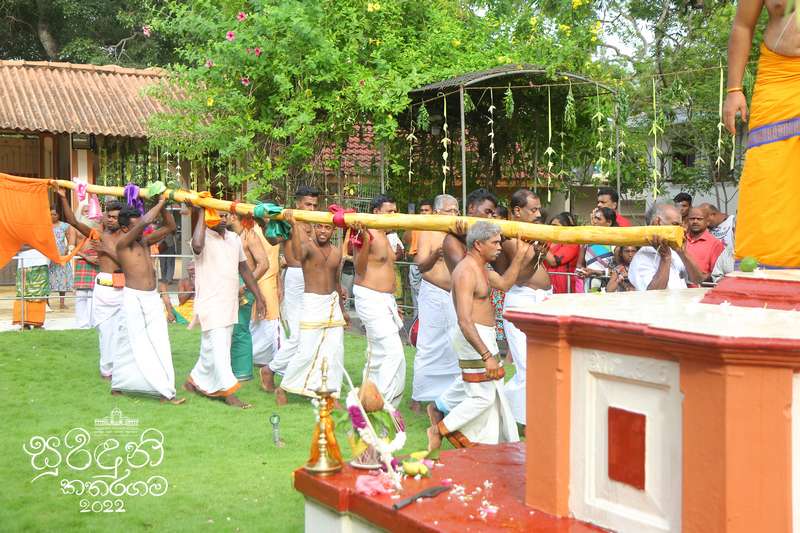
The couple were soon married and lived on Kataragama peak, or Vedahiti Kanda (‘The Mountain Where They Stayed’).
However, Skandha already had a spouse – Devasena or Tevani Amma. Once she heard of his second marriage and realised that her husband would not return, having taken up his permanent abode with Valli in Kataragama, she decided to forsake her divine home and settle down close to him. She persuaded her husband and Valli to descend from their hill-top home and live with her in the now-sacred city.
Buddhist tradition
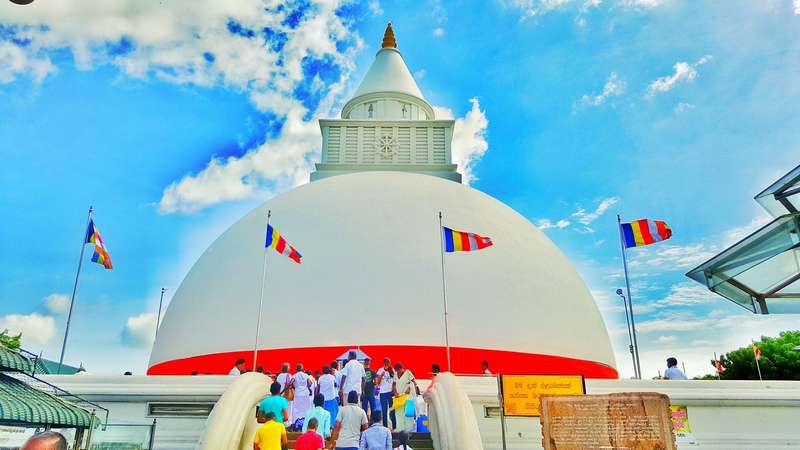
In the Buddhist tradition, Kataragama is one of the 16 sacred places in Sri Lanka visited by the Buddha during his third visit to the island. According to the Mahavamsa, Sri Lanka’s chronicle of history, Kataragama became a centre of Buddhist worship early on, with the planting of a shoot of the sacred bo tree brought to Sri Lanka by Sanghamitta, daughter of the Indian emperor Asoka.
The Sinhalese consider God Kataragama to be one of the Four Guardian Deities of the Sinhala pantheon, perhaps the most powerful one of them all. Legends say that the god is a Bodhisattva who heard Lord Buddha’s sermons and attained the higher faculty of ‘sovan’.
According to Sinhala tradition, the local ruler of Kataragama during the time of Lord Buddha’s third visit to the island was King Mahasena (or Mahaghosa). When Lord Buddha delivered his sermon at the Kihiri Forest in Kataragama, the king, who listened to the dharma and attained enlightenment, built a stupa on the site made hallowed by the Buddha’s visit.
Upon his death, King Mahasena was elevated to divine status and as his abode was Kataragama, he came to be known as the God of Kataragama. Kataragama, being the location for the first temple for the God of Kataragama, is to this day known as the Ruhunu Kataragama Mahasen Maha Devalaya.
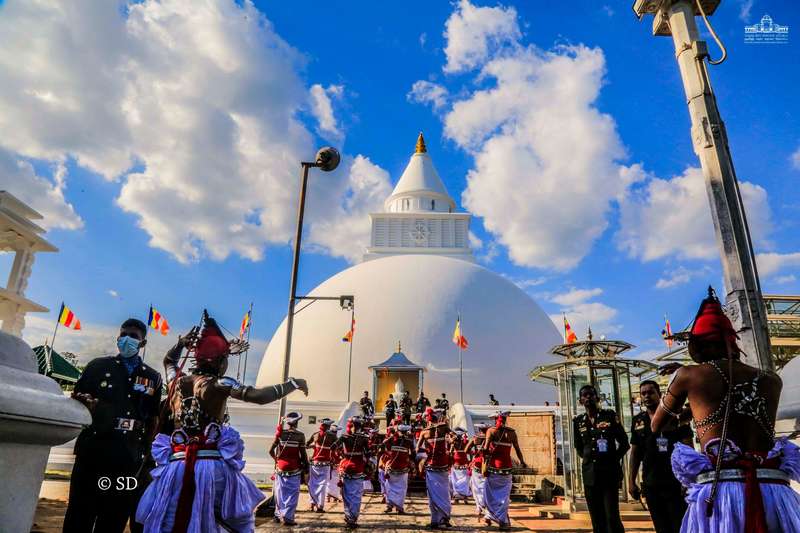
This Buddhist background associated with Lord Mahasen or Lord Katagrama has ensured that Buddhist traditions and rituals have been prioritised in the daily and annual offerings for the god.
According to legend, around 160 BC, King Dutugemunu undertook the blessings of the God Kataragama to undertake his expedition against Chola invader King Elara and rescue the country from foreign rule. After his victory, out of gratitude to God Kataragama and in fulfilment of the vow, he built the temple and dedicated it to the god.
Guide to Kataragama
Nestled on the banks of the Manik Ganga, close to the Yala National Park, the Kataragama shrine premises contain the main shrine of the god. The Kataragama sacred site is composed of a series of devales, or shrines, and the famed Buddhist stupa, the Kiri Vehera.
Next to the main shrine is a smaller shrine for the god’s elder brother, Ganesha, alongside two shrines for Vishnu and the Buddha. The main shrine is also connected via a narrow street to the shrine of the god’s mistress Valli Amma, while the back of the main shrine is connected via another street to the Kiri Vehera, the white-domed ancient Buddhist stupa that dominates the site. To the left of the main shrine is the shrine of the god’s legitimate spouse Devasena or Tevani Amma.
We Popular To Provide
Years Experience.
00
+Start Donating
00
+Become Volunteer
00
K+Quick Fundraise
00
+Pioneer throughs
OUR Projects
We Popular To Provide
Best Projects.
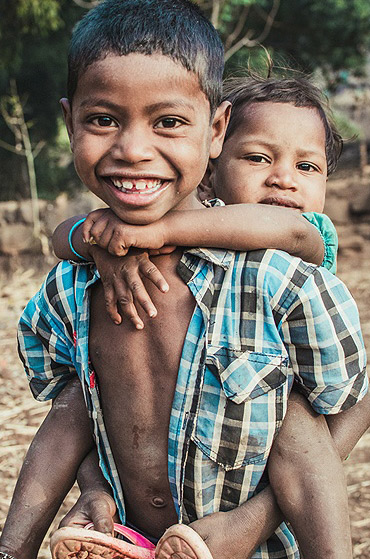
Our Best Projects
Event of Shares
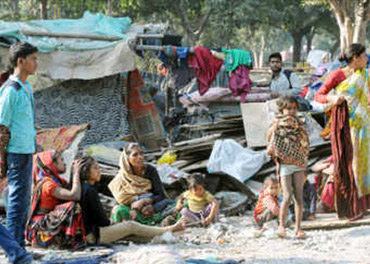
Our Best Projects
Event of Shares
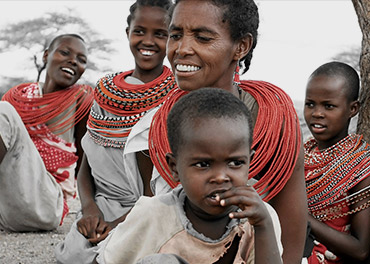
Our Best Projects
Event of Shares

Our Best Projects
Event of Shares
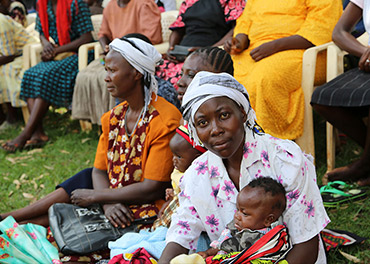
Our Best Projects
Event of Shares
Channelling hope for the Apeksha Hospital
Drawing inspiration from the generosity of visitors to Kataragama and the benevolence of the God Kataragama, the Ruhunu Maha Kataragama Devalaya is directing the temple’s funds, donated as tribute by its numerous devotees, toward the construction of a fully-equipped four-storey building to be used as the children’s ward for the Apeksha Hospital.
EXPERT TEAM
Meet Our Volunteer Team.
Welcome To Our We Donation
Video Poor.
If you are going to use a passage of Lorem Ipsum, you
need to be sure there isn't anything

Lorem ipsum dolor sit amet,elit, sed do eiusmod tempor incididunt ut labore et dolore aliqua.
Sumi parvin
Volunteer
Lorem ipsum dolor sit amet,elit, sed do eiusmod tempor incididunt ut labore et dolore aliqua.
Robi islam
Manager
Lorem ipsum dolor sit amet,elit, sed do eiusmod tempor incididunt ut labore et dolore aliqua.
Sumi parvin
Volunteer04 Feb 2024
Sella-Kataragama Ganesha Devalaya
Named after Lord Ganesh, the Ganesh Temple in Sella Kataragama is located on the waters of the Menik River. Although the Menik River is prone…
04 Feb 2024
Valli Amma Devalaya
Built for the Goddess Valli, the Valli Amma Devalaya is believed to predate the Sinhalese race, being an ancient deity worshipped by the aboriginal tribe…
04 Feb 2024
Kataragama Bo tree (Ashta Pala Ruha Bodhiya)
The Kataragama Bo tree is believed to be one of the eight saplings that emerged from the Jaya Sri Maha Bodhi in Anuradhapura, planted in…
04 Feb 2024
Menik Ganga
The Menik Ganga at Kataragama is a sacred river which begins from the Namunukula Mountain Range and is a subject of many legends. Customarily, devotees…
04 Feb 2024
Valli Amma’s cave
Situated on the banks of the Menik Ganga in Sella Kataragama, Valli Amma’s cave is believed to be where Prince Skandha met his future consort…
04 Feb 2024
Thevani Amman Kovil
Situated to the left of the main shrine is the shrine of Devasena or Tevani Amma, which is of considerable importance for Hindus.According to legend,…
04 Feb 2024
Kiri Vehera
Securing prominence as one of the more unique sacred monuments among the historical sites in Ruhuna, the Kiri Vehera is an ancient stupa believed to…
04 Feb 2024
Muslim Mosque
True to Kataragama’s renown as a multi-faith religious centre, Islamic Kathirkamam draws thousands of Muslim pilgrims who go annually to visit the mosque and shrine.The…
04 Feb 2024
Vedahiti Kanda
Before reaching the Maha Devalaya, a range of mountains is visible on the right. Among them is the holy mountain known as Vedahiti Kanda, the…
04 Feb 2024
Yala National Park
Designated as a wildlife sanctuary in 1990, the Yala National Park is the second largest national park in Sri Lanka. Consisting of five blocks, three…
04 Feb 2024
Kataragama Esala Festival
The Kataragama Esala Festival is the most magnificent and colourful festival held annually for the gods of Kataragama. Held on the Esala Full Moon Poya…
Information
Quick Link
Muruthan Pooja Time

Monday – Friday
04.30am | 10.30am | 06.30pm
Saturday
09.00am | 06.30pm
Copyright © 2025 Ruhunu Maha Kataragama Dewalaya. All Rights Reserved.






